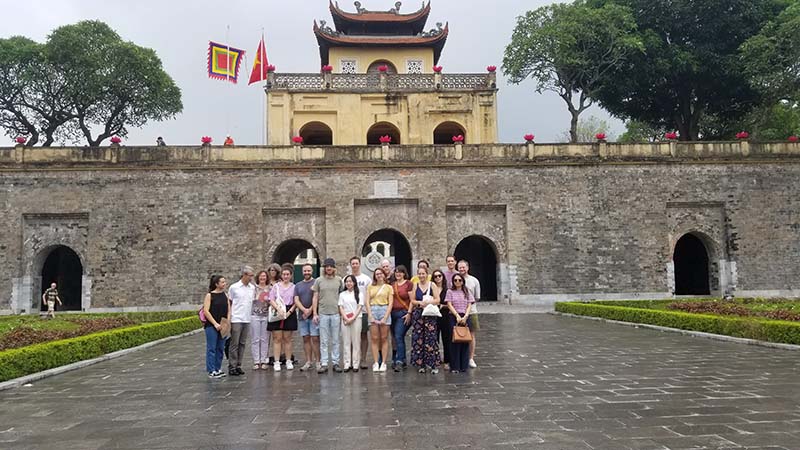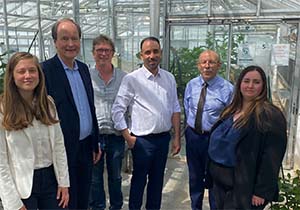
Modelling and Systemic Signaling (SYSTEMS)
 Nom du responsable : Gabriel Krouk
Nom du responsable : Gabriel Krouk
Directeur de recherche CNRS
Présentation
The SYSTEMS group owes its name to the Systems Biology approaches in one hand and to the nutrient-related Systemic Signaling questioning on the other hand that are both at the core of our research.
Nitrogen (N) and Phosphorus (P) are among the most important macronutrients affecting plant growth and development. In natural and agronomic ecosystems, plants and crops constantly face problems of N and P availability, linked to mineral mobility in soil. Nitrate (NO3–) the preferred N source of plants in aerobic soils tends to leak, when inorganic phosphate (HPO4–, Pi) is relatively immobile. However, plants have developed compensatory root foraging responses to adapt to fluctuating and heterogeneous soil environments. Understanding the plant response and adaptation to the availability of these two key nutrients is at the core of our group’s research. Our aims are to improve the basic knowledge on the strong entanglement between nutrient signaling and the rest of plant physiology and development related signaling and to provide future perspective for reducing fertilizers consumption and increasing food security.
In particular, the aim of the SYSTEMS group is to unravel systemic mechanisms controlling NxP interactions since both pathways display long-distance components whose cross-talks components are totally unknown. Indeed, we have previously shown that, impairing the root-to-shoot translocation of tZ and consequently their accumulation in shoots as important consequences for the compensatory response of roots to NO3- heterogeneity (Poitout et al., 2018). In addition, we have also shown that the Phosphate Starvation Response (PSR), characterized by the activation of several marker genes including miR399 and IPS1 is actually also a nitrogen response (Medici et al., 2019; Krouk and Kiba, 2020) and split-root experiments demonstrated that the N control of PSR displays at the same time local-N and systemic-N controls. All the aspect of N/P interactions in shoots are totally unknown and will be investigated as they probably share potential common molecular actors (Gautrat et al., 2021). Therefore, our group will largely turn much of its attention to shoot regulatory networks that influence plant nutrition with a particular focus on transcription factors and effectors such as hormones, miRNA and peptides.
To decipher the biological question described above, our group engage not only in using modeling approaches (Ruffel et al., 2011; Krouk et al., 2010b; Ristova et al., 2016; Carré et al., 2017; Alvarez et al., 2020), but is also dedicated to develop new algorithms providing different readings, decoding capabilities and viewpoints of our biological questions. The Systems group is actively engaged into this and aims at developing new modeling approaches (Machine Learning [SVM, RF, DNN…]) to elucidate how post-genomic datasets can teach us new routes of [plant] biology understanding
In brief, to advance our knowledge on the nutrient-related systemic regulatory network integrating nutrition and development, the Systems group combine forward (GWAS) and reverse genetics, transcriptomics, proteomics, peptidomics, sptPALM-3D with next-generation modeling to identify central regulators of N, P and N x P interactions in model plants.
Membres de l’équipe
Résultats marquants
Publications significatives
Safi A✉, Medici A, Szponarski W, Martin F, Clément-Vidal A, Marshall-Colón A, Ruffel S, Gaymard F, Rouached H, Leclercq J, Coruzzi GM, Lacombe B, Krouk G✉ (2021) GARP transcription factors repress Arabidopsis nitrogen starvation response via ROS-dependent and -independent pathways . J. Exp. Bot., 72(10):3881-3901
Gautrat P, Laffont C, Frugier F, Ruffel S✉ (2021) Nitrogen systemic signaling: From symbiotic nodulation to root acquisition. Trends Plant Sci., 26(4):392-406
Medici A*✉, Szponarski W*, Dangeville P, Safi A, Dissanayake IM, Saenchai C, Emanuel A, Rubio V, Lacombe B, Ruffel S, Tanurdzic M, Rouached H, Krouk G✉ (2019) Identification of molecular integrators shows that nitrogen actively controls the phosphate starvation response in plants. Plant Cell, 31(5):1171-1184
Ruffel S✉ (2018) Nutrient-related long-distance signals: common players and possible cross-talk. Plant Cell Physiol., 59(9):1723-1732
Poitout A, Crabos A, Petřík I, Novák O, Krouk G, Lacombe B, Ruffel S✉ (2018) Responses to systemic nitrogen signaling in Arabidopsis roots involve trans-zeatin in shoots. Plant Cell, 30(6):1243-1257
Carré C, Mas A✉, Krouk G✉ (2017) Reverse engineering highlights potential principles of large gene regulatory network design and learning. NPJ Syst. Biol. Appl., 3:17
Ristova D, Carré C, Pervent M, Medici A, Kim GJ, Scalia D, Ruffel S, Birnbaum KD, Lacombe B, Busch W, Coruzzi GM, Krouk G✉ (2016) Combinatorial interaction network of transcriptomic and phenotypic responses to nitrogen and hormones in the Arabidopsis thaliana root. Sci. Signal., 9(451):rs13
Medici A, Marshall-Colón A, Ronzier E, Szponarski W, Wang R, Gojon A, Crawford NM, Ruffel S, Coruzzi GM, Krouk G✉ (2015) AtNIGT1/HRS1 integrates nitrate and phosphate signals at the Arabidopsis root tip. Nat. Commun., 6:6274
Sources de financement








